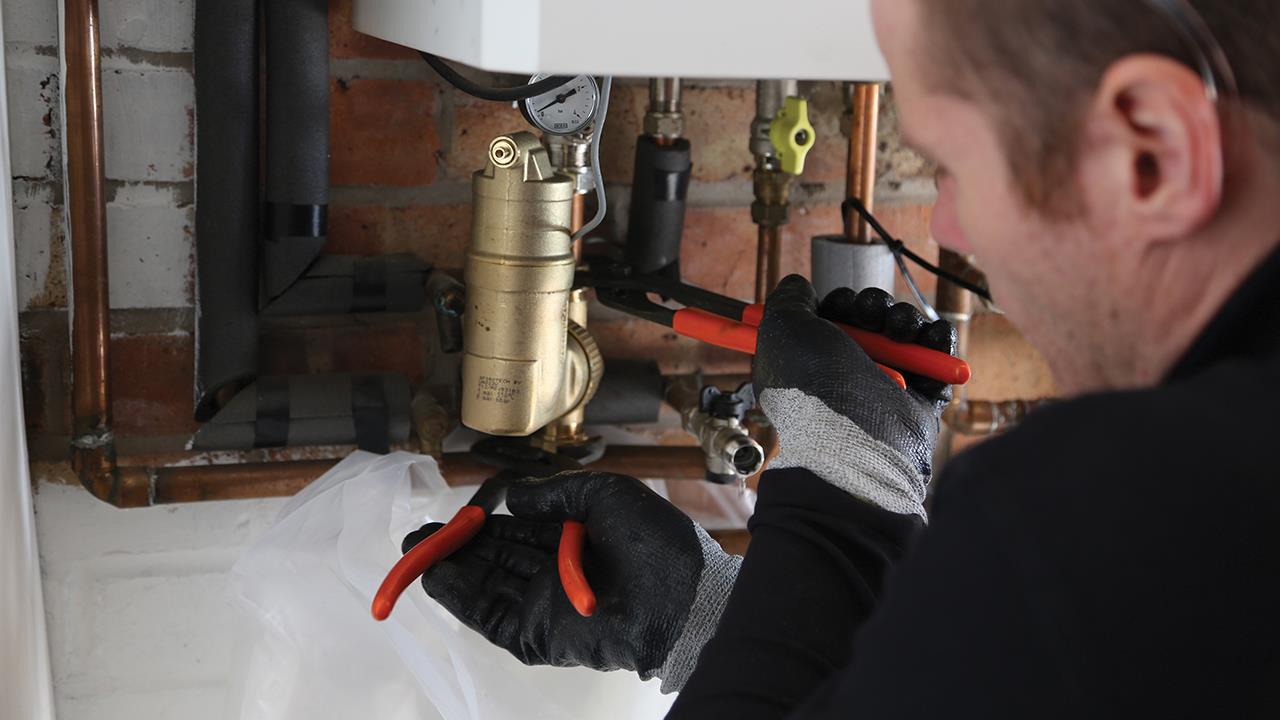

While water may be the cheapest part of any heating system, it is a component that can contribute towards serious inefficiencies if not kept in good health. So, with energy bills rising and many homeowners asking where they can be making efficiency gains, it is important for heating engineers to know how to achieve good water quality.
Test it before you chance it
When working on existing systems, the crucial first step is to understand what state the system is in. Part of this will involve a water analysis, which will help determine the nature and cause of any problems, as well as indicate the pH levels and identify any types of dirt present, allowing the installer to recommend the necessary solutions.
As well as carrying out an initial test before making any improvements to the system, it’s also important that regular testing comprises part of the maintenance programme, as outlined in BS 7593.
Dirt removal
A build-up of magnetite, dirt, or other debris will eventually clog up the pipework of a heating system and restrict system flow, resulting in dampened performance, radiator cold spots, and rooms that won’t heat up. Consequently, the boiler will have to work harder to deliver the desired levels of heating, meaning higher energy bills for your customer.
Debris can also clog up other components, including the heat exchanger of the boiler, causing them to require more maintenance, and, in the worst-case scenario, fail earlier than expected, which all comes at a cost to the homeowner.
The presence of dirt and magnetite can be dealt with by installing a dirt separation unit onto the system, such as the SpiroTrap MB3, for example. A dirt separator should be installed on the return to extract magnetic and non-magnetic debris before it enters the boiler and re-circulates around the system. The SpiroTrap MB3 has an internal tube that optimally separates the dirt particles from the system water, and an external magnet.
This type of unit has become more commonplace on heating systems as many boiler manufacturers stipulate that one must be installed to obtain extended warranties.
Thanks to BS 7593, which is now mandatory due to its integration into Part L, dirt separation units are only going to be more widely installed, as a permanent in-line filter is now required on all types of wet system.
Air removal
While fitting a dirt separator can help to keep system water free from dirt and magnetite, investing in a preventative solution is more effective in the long term than simply finding a cure to the issue.
Microbubbles form when there is either an increase in temperature, a decrease in pressure, or when dissolved gases become liberated from the water, meaning they are present in most wet heating systems.
Microbubbles can be hugely problematic in a heating system, if left untreated. They will eventually be reabsorbed into the system water, where the oxygen will then react with any ferrous internal surfaces, resulting in corrosion and the formation of debris and magnetite.
While automatic air vents (AAV) are very useful for the ongoing release of free air, they are not effective at removing microbubbles, which, due to their small size, have a hard surface tension, meaning they cannot join to form a larger bubble that can be released by an AAV.
A deaerator, such as the SpiroVent RV2, creates the right conditions for microbubbles to rise out of the water, before being released by an automatic valve at the top of the unit.
For the best results, a deaerator should be installed on the flow pipe at the point in the system with the highest temperature and lowest pressure, as this is where microbubbles will form. If fitted on the flow, the deaerator is able to capture and remove trapped microbubbles before they can travel around the system and cause corrosion to occur.
Explaining water quality to customers
For homeowners who don’t understand the important role that good water quality plays in improving the efficiency of the system and helping to minimise running costs, Spirotech’s Better Heating website has been designed to help.
Through a series of consumer-friendly videos and the use of easy to understand language, the educational Better Heating hub explains the impact that air and dirt can have, why they are present in a heating system in the first place, and the consequences if they are left untreated.
If you'd like to keep up-to-date with the latest developments in the heating and plumbing industry, why not subscribe to our weekly newsletters? Just click the button below and you can ensure all the latest industry news and new product information lands in your inbox every week.